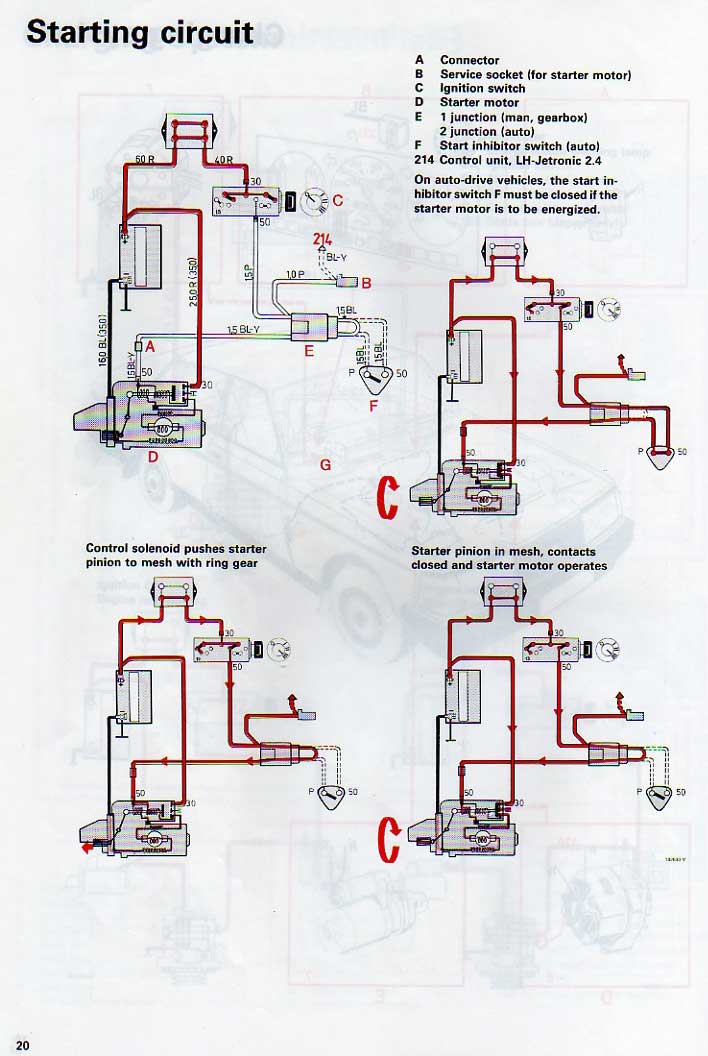|
Hi,
I vote bad connections twice or two bad starters.
Interesting that the solenoid clicks but it should be a little louder, like a “clunk or clack”! It must pull the Bendix Drive into the position of engaging the flywheel.
What usually happens, to me, on the original smaller drive motor starters used in near and after nineties cars, the solenoid contacts studs do not get pushed hard enough.
It’s a slight defect that shows up after many years of service. The tips of the studs or the floating cross bar wears away or gets pitted away until they fall out of reach of each other.
The stroke of the plunger inside bottoms out internally and can no longer strike a contact bar all the way to the terminal studs.
If a rebuilder does not check the stroke to see that it pushes the bar across the terminals, to the closed position and then see that it moves more after making the contact, then there is not enough holding pressure on the contacts to prevent some arcing. This becomes a high resistance.
I go inside and move the rod, inside the the moving plunger, towards the contacts about 3 mm more. This gives more of a push onto the spring inside the terminal body, that you cannot access due to the crimp around it.
With all that said you can check the solenoid for full closure in a couple ways. A voltmeter is the most conclusive method. A voltmeter/ohmmeter is the best friend you can have, next to you, to work with on any electrical item.
With one voltmeter lead on the battery cable terminal of the solenoid and the other on the motor lead that’s on the other side is the setup.
You should see voltage of the battery at 12+ volts. The motor is the grounding circuit through the internal carbon brushes and armature of the motor.
If the contacts get closed, in the solenoid, the motor is almost a dead short and draws a lot of current!
This puts the voltmeter in parallel with the circuit and not “across” the battery voltage potential any longer.
A voltmeter has to be “across” the power source to read a voltage potential.
If you don’t see a full 12+ volts then there could be a bad positive cable or a open circuit through or in the motor side. A real bad path to ground stops you from getting a full 12v reading or the battery positive cable is bad or is low on charge.
If you get the full 12+ volts, then, you are ready to turn the key and if the contacts close with that click, the voltage reading will go to a ZERO. If it stays up, it didn’t close.
If the starter motor runs, the battery system voltage will drop or hover around to nine volts due to the large current draw. This is normal.
A number like a 0.02 is still good.
But move the decimal point to a 0.2 reading or more, then, there is a definite problem!
The zero means the solenoid switch did close to the motor and the motor side is bad or an open exists or not getting enough current to it to turn it over.
Maybe there is a power delivery issue carried over and the previous starter was not all that bad but was a cable issue.
Something could be binding the new motor inside but the interior light in the car should dim slightly If current is being drawn. That s called a voltage drop.
Rebuilders are not all that thorough and can scrimp by only cleaning out carbon dust and maybe turning the armatures.
A carbon brush could be stuck up in the air on the inside. It only takes one out of four!
They probably use a plastic cylinder to pack those brushes back to go over the armature.
I get by by using a ratchet socket to set the brushes onto so I can slide the whole ring assembly down at once.
The assembled ring has a notch in the outer ring that aligns to a “keying tip” punched in the side of the motor housing. It’s hard to see!
The ring might have been cocked during rebuild or has a broken brush from being careless.
They are more fragile than they look at first.
I use the voltmeter check fuses in High Voltage live circuits. I can determine if they are blown out or good.
Those Zeros mean a good fuse and It saves time from yanking out three fuses on three phase circuits to use a continuity tester.
When using a voltmeter, it like sports, you have to remember which team side you are playing with or looking for the payoff from!
(:-)
On the newer cars, with spade fuses, they have two tiny little holes in their tops for this purpose.
You can also use the ohmmeter here too but only with the power must be disconnected to protect the meter as an ohmmeter senses only a very low battery current circuit built inside.
They are good for checking incandescent light bulbs and diodes too!
I hope this helps to give you a way to look inside to these areas in the future. Starters are not nice to do laying on your back if you have some vertigo like me!
A meter is the only way to see electricity unless you like lots of sparks.
The meter is a communications device into that unseen world!
Phil
|



